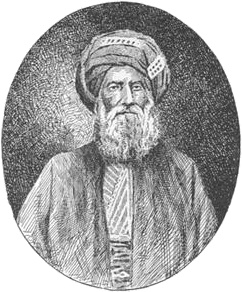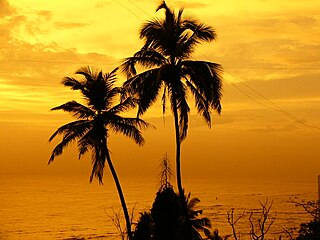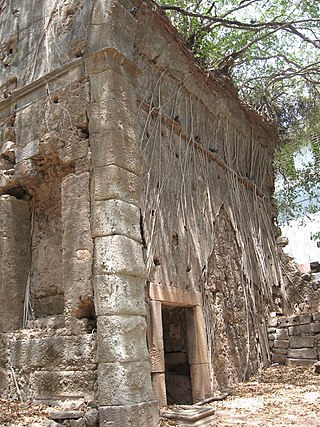Related Research Articles

Mahim (Marathi: माहिम) is a neighbourhood in Mumbai, Maharashtra, India. The Mahim Junction railway station on the Western Railway and Harbour Railway of the Mumbai Suburban Railway network is the last station of the city, as neighboring Bandra comes in Mumbai Suburb. Mahim is an ethnically and religiously diverse town and has a Hindu temple, church, mosque and Parsi fire-temple existing within a few meters of each other. The town has a large Rich and Upper Middle class Marathi population.
Byculla is an area of South Mumbai.

Salsette Island is an island in Konkan division of the state of Maharashtra, along India's west coast. Administratively known as Greater Mumbai, the Mumbai Suburban district, Mira Bhayander and a portion of Thane district lie within it, making it very populous and one of the most densely populated islands in the world. It has a population of more than 20 million inhabitants living on an area of about 619 square kilometres (239 sq mi).

The history of Mumbai can be traced back to 600 BC, with evidence of the first known settlement of the Harrappan civilization discovered in the region.

Sir Jamsetjee Jejeebhoy, 1st Baronet,, also spelt Jeejeebhoy or Jeejebhoy, was an Indian merchant and philanthropist. He made a huge fortune in cotton and the opium trade with China.

David Sassoon was the treasurer of Baghdad between 1817 and 1829. He became the leader of the Jewish community in Mumbai after Baghdadi Jews emigrated there.

Lands End is the southernmost tip of Bandra in Mumbai. The area is notable for being the residence of several Bollywood actors. It is an upmarket area in Mumbai and the properties in this area is one of the most expensive properties in the world. Notable residents include Shahrukh Khan.

Sir Dinshaw Maneckji Petit, 1st Baronet was an Indian entrepreneur and founder of the first textile mills in India, as well as a great philanthropist. He was part of the Petit family and became the first Petit baronet.

Castella de Aguada, also known as the Bandra Fort, is a fort located in Bandra, Mumbai. "Castella" is a misspelling for Portuguese "Castelo" (castle), although it seems its Portuguese builders actually called it Forte de Bandorá. It is located at Land's End in Bandra. It was built by the Portuguese in 1640 as a watchtower overlooking Mahim Bay, the Arabian Sea and the southern island of Mahim. The strategic value of the fort was enhanced in 1661 after the Portuguese ceded the seven islands of Bombay that lay to the immediate south of Bandra to the English. The name indicates its origin as a place where fresh water was available in the form of a fountain ("Aguada") for Portuguese ships cruising the coasts in the initial period of Portuguese presence. The fort lies over several levels, from sea level to an altitude of 24 metres (79 ft). Castella de Aguada has been featured in several Hindi films, such as Dil Chahta Hai and Buddha Mil Gaya.

Sir Pherozeshah Merwanjee Mehta was an Indian politician and lawyer from Bombay. He was knighted by the British Government in India for his service to the law. He became the Municipal commissioner of Bombay Municipality in 1873 and its president four times – 1884, 1885, 1905 and 1911. Mehta was one of the founding members and President of the Indian National Congress in 1890 held at Calcutta.

The Mahim Causeway is a vital link road connecting Mumbai City district/South Mumbai with its Northern and Western Suburbs. The causeway links the neighbourhoods of Mahim to the south with Bandra to the north.
Lady Jamshedjee Road, better known as "L.J. Road", is a major road that runs through Mahim in Mumbai. It is named in honour of Lady Jamshetjee Jeejeebhoy, a philanthropic Parsi lady who funded the construction of Mahim causeway.
The Jejeebhoy Baronetcy, of Bombay, is a title in the Baronetage of the United Kingdom. It was created 6 August 1857 for Sir Jamsetjee Jejeebhoy, a prominent Parsee merchant and philanthropist who was the first Parsi and first Indian to be knighted (1842) and the first to be made a baronet (1857). When Sir Jamsetjee Jejeebhoy was made a baronet, it was realised that the Parsee custom was for a change of names for each generation. This conflicted with the British tradition of using consistent surname for a particular baronetcy. In 1915, the Imperial Legislative Council passed the Sir Jamsetjee Jejeebhoy Baronetcy Act, providing that all the male heirs should take these names and no other. Similar provision was made for subsequent Parsee baronets. All holders of the title relinquish their own names and assume that of the first Baronet.
Indigenous tribals have inhabited Mumbai (Bombay) since the Stone Age. The Kolis and Aagri were the earliest known settlers of the islands. Between the 2nd century BCE and 10th century CE, the islands came under the control of successive indigenous dynasties: the Satavahanas, Abhiras, Vakatakas, Kalachuris, Konkan Mauryas, Chalukyas, Rashtrakutas, Silharas & Chollas.

Bombay, also called Bom Bahia or Bom Baim in Indo-Portuguese creole, Mumbai in the local language; is the financial and commercial capital of India and one of the most populous cities in the world. It's also the cosmopolitan city centre of the Greater Bombay Metropolitan Area, and the cultural base of the Bollywood film industry. At the time of arrival of the Portuguese Armadas, Bombay was an archipelago of seven islands. Between the third century BCE and 1348, the islands came under the control of successive Hindu dynasties. The Delhi Sultanate had been ruling the area along with Chaul, New Bombay (Thana) & Damaon, with the administrative centre in Bassein (Vasai) since the raids of Malik Kafur in the Konkan region and across the Indian subcontinent. This territory in North Konkan along with the Bombay islands were later taken over by the Sultan of Guzerat from 1391 to 1534, when he had declared the end of the suzerainty to Delhi, after the Timurid invasion of it. Growing apprehensive of the power of the Moghal emperor Humayun, Sultan Bahadur Shah of Gujarat was obliged to sign the Treaty of Bassein on 23 December 1534; according to which, the seven islands of Bombay, Fort San Sebastian of Bassein in strategic town of Bassein (Vasai), and its dependencies were offered to the Portuguese East Indies. The places were only later officially surrendered on 25 October 1535, by the Sultan of Guzerat.

Bombay, also called Bom baim in Portuguese, is the financial and commercial capital of India and one of the most populous cities in the world.
Framji Cowasji Banaji, Esq. was born in Bombay to a Parsi family. His father, Cowasji Byramji (1744-1834), was a merchant, trading in cotton and had trading links with China, England and various Indian cities. He was the lease holder of Poway estate. During his lifetime he did much for the city and his country and its people for which a Framji Cawasji Institute was built after his death. Some of his achievements were:-

The Parsi Lying-in Hospital (PLIH), also known as Temulji's Lying-in Hospital, sometimes spelled Tehmulji's Lying-in Hospital, was one of the first maternity hospitals in Bombay. It was co-founded by physician and obstetrician Temulji Bhicaji Nariman in 1887 and completed in 1895. Dwindling numbers of Parsi births in the latter half of the 20th century led to its closure.
References
- ↑ Mahesh Dattani. "A bridge with a difference".